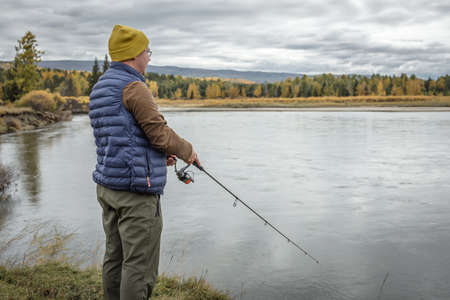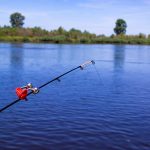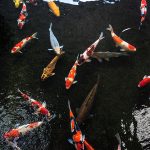1. The Evolution of the Angler
Fishing in the United States has come a long way from its early days. What started as a means of survival for Native Americans and early settlers has evolved into a popular pastime that blends sport, relaxation, and environmental stewardship. Today’s angler is not just someone who catches fish — they’re often conservation-minded individuals who care deeply about the waterways they fish in.
From Food Source to Favorite Hobby
In the past, fishing was essential for putting food on the table. Families relied on rivers, lakes, and coastal waters to provide protein. Over time, however, industrialization and access to grocery stores shifted fishing away from necessity and more toward recreation. By the mid-20th century, fishing had become a favorite American hobby.
Historical Transition of Fishing in the U.S.
| Time Period | Main Purpose of Fishing | Common Practices |
|---|---|---|
| Pre-1800s | Sustenance | Hand lines, spears, nets; community-based |
| 1800s – Early 1900s | Commercial & Personal Use | Rod and reel emerge; local markets grow |
| Mid-1900s – 1980s | Recreational Sport | Bass fishing tournaments; weekend angling grows |
| 1990s – Present Day | Sport, Hobby & Conservation | Catch-and-release practices; ecological awareness rises |
The Modern-Day Anglers Role
Today’s anglers are more than just people with rods and bait. They are part of a growing community that supports clean water initiatives, habitat restoration, and sustainable fishing practices. Many participate in state-level conservation programs or donate time to help educate new fishers about responsible angling.
Key Traits of a Modern U.S. Angler:
- Conservation-focused: Practices catch-and-release and supports wildlife protection laws.
- Community-oriented: Engages in local events, cleanups, and educational workshops.
- Diverse interests: Enjoys fly fishing, kayak fishing, saltwater trips, and more.
- Lifelong learning: Stays updated on best practices and changing regulations.
The identity of an angler in America has grown beyond catching fish—it now includes protecting natural resources and passing down traditions to future generations.
2. Gear Up: Tools of the Modern Angler
Today’s anglers are more equipped than ever before, blending traditional know-how with cutting-edge technology to enhance their fishing experience. Whether you’re casting lines from a lakeside dock or navigating open waters in a bass boat, having the right gear can make all the difference. Let’s take a look at the essential tools every modern-day fisher should consider.
High-Tech Rods and Reels
Modern rods and reels have come a long way from the bamboo poles of the past. Today, materials like carbon fiber and graphite provide strength without sacrificing sensitivity. Reels now come with advanced drag systems and gear ratios designed for specific types of fishing—from finesse freshwater techniques to heavy-duty saltwater action.
Types of Rods and Reels
| Type | Best For | Key Features |
|---|---|---|
| Spinning Combo | Beginners & Versatile Use | Easy to cast, great for light lures |
| Baitcasting Setup | Experienced Anglers | More control, ideal for heavier lures |
| Fly Fishing Rod | Freshwater Streams & Rivers | Designed for precision and delicate presentation |
Smart Tech: GPS and Fish Finders
No need to rely on luck alone—today’s anglers use GPS units and sonar fish finders to locate prime fishing spots with pinpoint accuracy. These devices not only show underwater structures but also help mark waypoints, track water depth, and even save successful fishing locations for future trips.
Popular Tech Tools
| Device | Main Function | Why It Matters |
|---|---|---|
| GPS Chartplotter | Navigating waterways & marking spots | Keeps you on course and helps return to hotspots |
| Sonar Fish Finder | Locating fish & underwater structure | Saves time by showing where the fish are hiding |
| Casting Sonar Devices (e.g., Deeper) | Portable fish finding via smartphone app | Great for shore anglers and kayakers |
Eco-Friendly Tackle Options
The modern angler is also an environmental steward. Eco-friendly tackle options—like lead-free weights, biodegradable baits, and barbless hooks—help protect aquatic ecosystems while still offering performance.
Sustainable Tackle Checklist:
- No-lead sinkers: Safer for birds and aquatic life.
- Biodegradable soft plastics: Reduce pollution when lost in water.
- Barbless hooks: Easier catch-and-release that minimizes harm to fish.
- Cotton-based bait bags: Replace plastic packaging with compostable materials.
Tackling the water today means combining skill with smart equipment choices. From high-performance rods to eco-conscious gear, today’s angler has everything they need to enjoy the sport responsibly and successfully.
![]()
3. Hooked on Sustainability
Today’s anglers are more than just people who love to fish—they’re passionate stewards of our natural waters. Being a modern-day angler means understanding that your actions impact the environment and the future of fishing. Let’s break down how responsible anglers play a key role in conservation through catch-and-release practices, habitat protection, and active involvement in wildlife management.
Catch-and-Release: More Than Just Letting Go
Catch-and-release fishing isn’t just about putting the fish back in the water. It’s about doing it right to make sure the fish survives and thrives. Anglers today use techniques and tools designed to minimize harm, like barbless hooks and rubber landing nets. Heres a quick guide:
| Best Practices | Why It Matters |
|---|---|
| Use barbless hooks | Makes it easier to release fish without injury |
| Keep fish wet and handle gently | Reduces stress and improves survival rates |
| Use proper tools like dehookers or pliers | Quickly remove hooks with less damage |
| Limit air exposure to under 10 seconds | Helps fish recover faster after release |
Protecting Habitats: Fishing Beyond the Water
Modern anglers understand that healthy habitats mean better fishing. That’s why they support local clean-up efforts, avoid sensitive spawning areas during certain seasons, and report illegal dumping or habitat destruction. Every little action helps keep waterways clean and fish populations strong.
Simple Ways Anglers Can Help Protect Habitats:
- Join or organize river and shoreline cleanups
- Avoid using lead tackle that can poison wildlife
- Stick to established trails to reduce erosion near banks
- Respect seasonal closures and no-fishing zones
Getting Involved in Wildlife Management
You don’t need a biology degree to help manage fish populations. Anglers contribute valuable data by reporting catches, participating in tagging programs, and supporting science-based regulations. Many also volunteer with state agencies or conservation groups to help improve fisheries for future generations.
Your Role as a Conservation-Minded Angler:
- Buy fishing licenses—funds go directly into conservation programs
- Support organizations like Trout Unlimited or B.A.S.S. Conservation
- Share your knowledge with new anglers to spread sustainable habits
- Attend public meetings or comment on proposed regulations that affect local waters
The modern angler is more than someone who enjoys casting a line—they’re an important part of keeping America’s lakes, rivers, and oceans healthy for generations to come.
4. Casting into Culture
Fishing is more than just catching fish—its a part of American life that brings people together and connects generations. From coast to coast, youll find fishing deeply woven into local traditions, family memories, and even regional pride. Whether it’s a quiet weekend at the lake or a buzzing bass tournament, fishing plays a meaningful role in communities across the country.
Family Time on the Water
Many Americans have fond childhood memories of learning to cast a line with parents or grandparents. Fishing trips are a favorite way for families to unplug from digital distractions and spend quality time outdoors. These outings often become yearly traditions, passed down like secret bait recipes or lucky hats.
Popular Family Fishing Spots by Region
| Region | Popular Spot | Main Species |
|---|---|---|
| Midwest | Lake of the Ozarks, MO | Bass, Catfish |
| Southeast | Okefenokee Swamp, GA | Panfish, Bowfin |
| Northeast | Finger Lakes, NY | Trout, Bass |
| West Coast | Clear Lake, CA | Largemouth Bass |
| Pacific Northwest | Columbia River, OR/WA | Salmon, Steelhead |
Tournaments and Local Pride
A lot of communities host annual fishing tournaments that bring people together—from seasoned anglers to first-timers. Events like the Bassmaster Classic or ice fishing derbies in northern states are more than competitions—they’re celebrations of local culture and outdoor life. Winning isn’t everything; it’s about sharing stories, meeting neighbors, and keeping traditions alive.
The Role of Fishing in American Identity
Fishing reflects many core American values: independence, patience, respect for nature, and self-reliance. It’s also one of the most accessible outdoor activities—anyone can try it with just a rod, some bait, and a little know-how. Whether youre casting off a pier in Florida or fly-fishing in Montana’s rivers, youre taking part in a shared cultural experience that has shaped—and continues to shape—American life.
5. From Bank to Boat: Types of Angling Adventures
Across the United States, fishing isn’t just a pastime—it’s a lifestyle with a variety of styles and settings that suit every kind of angler. Whether youre casting from the riverbank or heading offshore in search of trophy fish, each type of angling offers its own unique thrill. Let’s take a look at some popular forms of fishing adventures and where you’ll find them around the country.
Fly Fishing in Mountain Streams
Fly fishing is an art form in itself, often associated with the tranquil streams of the Rocky Mountains or Appalachian region. Anglers use lightweight rods and artificial flies to mimic insects floating on the waters surface. It requires patience, technique, and a good pair of waders—but the reward is often a beautiful wild trout and peaceful solitude in nature.
Bass Fishing in Southern Lakes
Head down South, and youll find bass fishing is almost a religion. Lakes across Texas, Alabama, Florida, and Georgia are home to largemouth bass, one of America’s most sought-after freshwater gamefish. Whether from a boat or shoreline dock, anglers use crankbaits, soft plastics, and spinnerbaits to hook these aggressive fighters.
Deep-Sea Sportfishing
If you’re looking for something more intense, deep-sea sportfishing off the Atlantic or Pacific coasts offers big thrills. Charter boats take anglers miles offshore in pursuit of marlin, tuna, mahi-mahi, and swordfish. It’s fast-paced, physically demanding, and incredibly rewarding when you land that once-in-a-lifetime catch.
Ice Fishing on Northern Lakes
In colder states like Minnesota, Wisconsin, and upstate New York, ice fishing turns frozen lakes into winter playgrounds. Anglers drill holes through thick ice and fish for perch, walleye, and northern pike using tip-ups or jigging rods inside cozy shanties—or even heated cabins on ice!
Surfcasting Along Coastal Shores
Surfcasting is popular along both coasts—from Cape Cod to California—where anglers cast heavy tackle right into the surf in hopes of catching striped bass, redfish, or bluefish. It’s a great way to enjoy beach days with a rod in hand and salt air on your face.
Quick Look: Popular U.S. Fishing Styles by Region
| Fishing Style | Region | Target Species |
|---|---|---|
| Fly Fishing | Rocky Mountains, Appalachians | Trout (Rainbow, Brown), Grayling |
| Bass Fishing | Southeast & Midwest Lakes | Largemouth Bass, Smallmouth Bass |
| Deep-Sea Sportfishing | Atlantic & Pacific Oceans | Tuna, Marlin, Mahi-Mahi |
| Ice Fishing | Northern U.S., Great Lakes Region | Walleye, Perch, Pike |
| Surfcasting | East & West Coast Beaches | Striped Bass, Bluefish, Redfish |
No matter your skill level or location, there’s an angling adventure waiting for you somewhere across America’s diverse waterscapes.


